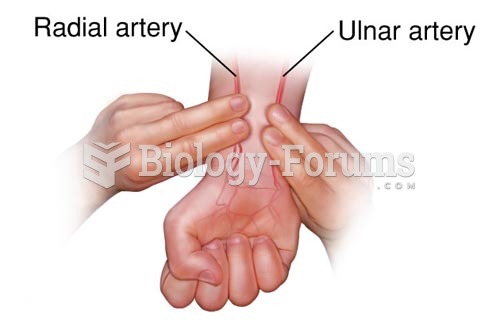|
|
|
The liver is the only organ that has the ability to regenerate itself after certain types of damage. As much as 25% of the liver can be removed, and it will still regenerate back to its original shape and size. However, the liver cannot regenerate after severe damage caused by alcohol.
As of mid-2016, 18.2 million people were receiving advanced retroviral therapy (ART) worldwide. This represents between 43–50% of the 34–39.8 million people living with HIV.
The first successful kidney transplant was performed in 1954 and occurred in Boston. A kidney from an identical twin was transplanted into his dying brother's body and was not rejected because it did not appear foreign to his body.
Nearly 31 million adults in America have a total cholesterol level that is more than 240 mg per dL.
The first oral chemotherapy drug for colon cancer was approved by FDA in 2001.
 The Allen Test: Pallor is initiated by compressing the radial and ulnar arteries with the fist clenc
The Allen Test: Pallor is initiated by compressing the radial and ulnar arteries with the fist clenc
 If necessary, connect a battery charger to the battery before starting the compression test. It is ...
If necessary, connect a battery charger to the battery before starting the compression test. It is ...





